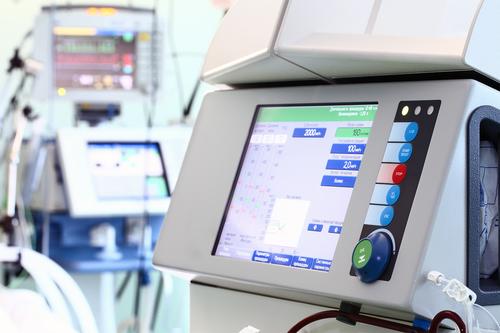The most efficient and ecologically sound automation system may be "eco obsolete" — an older system sustained with obsolete parts.
October 8, 2015
While old mainframe computers that require giant cooling rooms or the incandescent light bulb may not seem so attractive, there are some older technologies that are treasured today (just ask any vinyl collector). The same holds true for many parts for industrial equipment as well. Old parts that are still useful — and ecologically sound — have gained their own positive designation: eco obsolete technology (EOT).

Health and safety regulations are extremely strict in the medical sector, so it's much easier to source and replace one part, than the whole system.
(Source: European Automation)
For industries that rely on obsolete parts EOT plays a particularly prominent role in keeping automated processes running without costly and time-consuming efficiency overhauls. Military equipment, for example, often needs to last decades.You can’t discard and replace an aircraft carrier as quickly — and as inexpensively — as you swap out your laptop or smartphone.
Not all old equipment is inefficient or a big contributor to carbon emissions. Often, sustaining an older system is more ecologically sound that discarding it for a new system. “One of the reasons that manufacturing facilities choose to upgrade to newer technology is to improve energy efficiency. Yet using obsolete motors, drives, PLCs, and HMIs to replace parts in a system doesn't have to have a negative effect on energy efficiency,” said Jonathan Wilkins, marketing director of European Automation, a supply and repair service for industrial parts.
READ MORE ARTICLES ON PARTS AND COMPONENTS:
European Automation's definition of EOT parts requires that the parts are not a drag on environmental efficiency. “Eco obsolete parts are those that meet current efficiency regulations,” said Wilkins. As long as the part allows an industrial system to meet environmental standards, then cost may be the deciding factor in using older parts. “Using cheaper EOT parts will improve total cost of ownership and help OEMs to improve their return on investment,” said Wilkins.

Implementing EOT reduces your carbon footprint whilst avoiding a costly system upgrade.
(Source: European Automation)
Some Industries Thrive on Old Parts
In addition to the military, which is a well-known consumer of decades-old components, Wilkins points to energy and healthcare as sectors that extend the life of older technology. “The two main industries that rely on obsolete parts are pharmaceutical and nuclear,” said Wilkins. “Health and safety regulations are extremely strict in these sectors, so every piece of machinery has to go through numerous safety checks before it can be used. Because of this, it's much easier to source and replace one part, than the whole system.”
Another factor favoring older technology is the slow audit cycle for approving new technology in the pharmaceutical and nuclear industries. “The audits that are conducted as part of the ISO50001 standard occur on a yearly basis, meaning that it might take up to 12 months for a facility to find out if one new part is damaging their energy rating,” said Wilkins.

Using obsolete motors, drives, PLCs, and HMIs to replace parts of a system doesn't have to have a negative effect on energy efficiency.
(Source: European Automation)
Do Small Plants Need New Tech?
While Industry 4.0 is taking the manufacturing world by storm, much of that new weather is occurring with large global manufacturers that are managing multiple plants. While those companies can derive substantial savings from new technology, the same is not necessarily true with smaller plants. “Unless you run multiple manufacturing plants that all need to be connected, as is the case with distributed control (DC) and supervisory control and data acquisition (SCADA) systems for multinational processing applications, the features included in new systems won't bring anything extra to your facility,” said Wilkins. “In manufacturing, new technology is produced with larger companies in mind.”

We’re heading to Philly and Houston! Design & Manufacturing Philadelphia will take place Oct. 7-8, while Design & Manufacturing Texas will be in Houston Oct. 13-14. Get up close with the latest design and manufacturing technologies, meet qualified suppliers for your applications, and expand your network. Learn from experts at educational conferences and specialty events. Register today for our premier industry showcases in Philadelphia and Texas!
Rob Spiegel has covered automation and control for 15 years, 12 of them for Design News. Other topics he has covered include supply chain technology, alternative energy, and cyber security. For 10 years he was owner and publisher of the food magazine Chile Pepper.
About the Author(s)
You May Also Like





